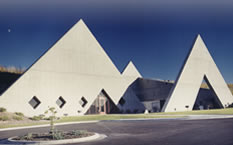Shortages of medical radioisotope molybdenum-99 could be a thing of the past in the USA according to an academic-industrial partnership that claims its novel manufacturing method will meet all the country's needs.
 |
| Idaho Accelerator Center (Image: IAC) |
Mo-99 is used to generate technetium-99 (Tc-99), a very short-lived radioisotope with a half-life of only six hours that is widely used in diagnostic medical imaging. With a 66-hour half-life itself, Mo-99 has a shelf-life of only a few days. Supply disruptions can therefore soon have a major impact on medical provision around the world, as experienced globally in 2008 when the five research reactors producing nearly all of the world's Mo-99, and thus Tc-99, were out of action within weeks of each other.
Now, Positron says that it has plans for a subsidiary in collaboration with the ISU Idaho Accelerator Center that will specialise in the production of commercial isotopes using particle accelerators. Positron chairman T Erik Oaas said: "Working side-by-side with ISU, we intend to replace the foreign supply of Mo-99 in the USA with a product produced here in Idaho." Meanwhile, Pam Crowell, ISU vice president for research, said the university is on course to become a national leader in the research and development of medical radioisotopes and said the university was "excited" to be working "to help deliver vital medical products in the US."
Photo-opportunity for Canadian partnership
The Positron-ISU announcement comes days after medical isotope supplier MDS Nordiron and TRIUMF, Canada's national laboratory for particle and nuclear physics, signed an agreement to study the feasibility of producing Mo-99 by photo fission using a linear accelerator.
Mo-99 is traditionally produced by fission of uranium in research reactors, some of which use highly enriched uranium (HEU) fuel. According to MDS Nordion, the photo fission technique not only eliminates the need to ship and handle HEU fuel, it also provides "a potential alternate solution through which to supplement the production capacity of Mo-99, and lessen the reliance on existing nuclear research reactors."
A research group at the University of Delft in the Netherlands reported last year that it is also working on novel methods to produce Mo-99 from naturally occurring Mo-98 using a research reactor producing lower neutron flux that tradiationally required.





_63865.jpg)
_18570.jpg)
_16159.jpg)





